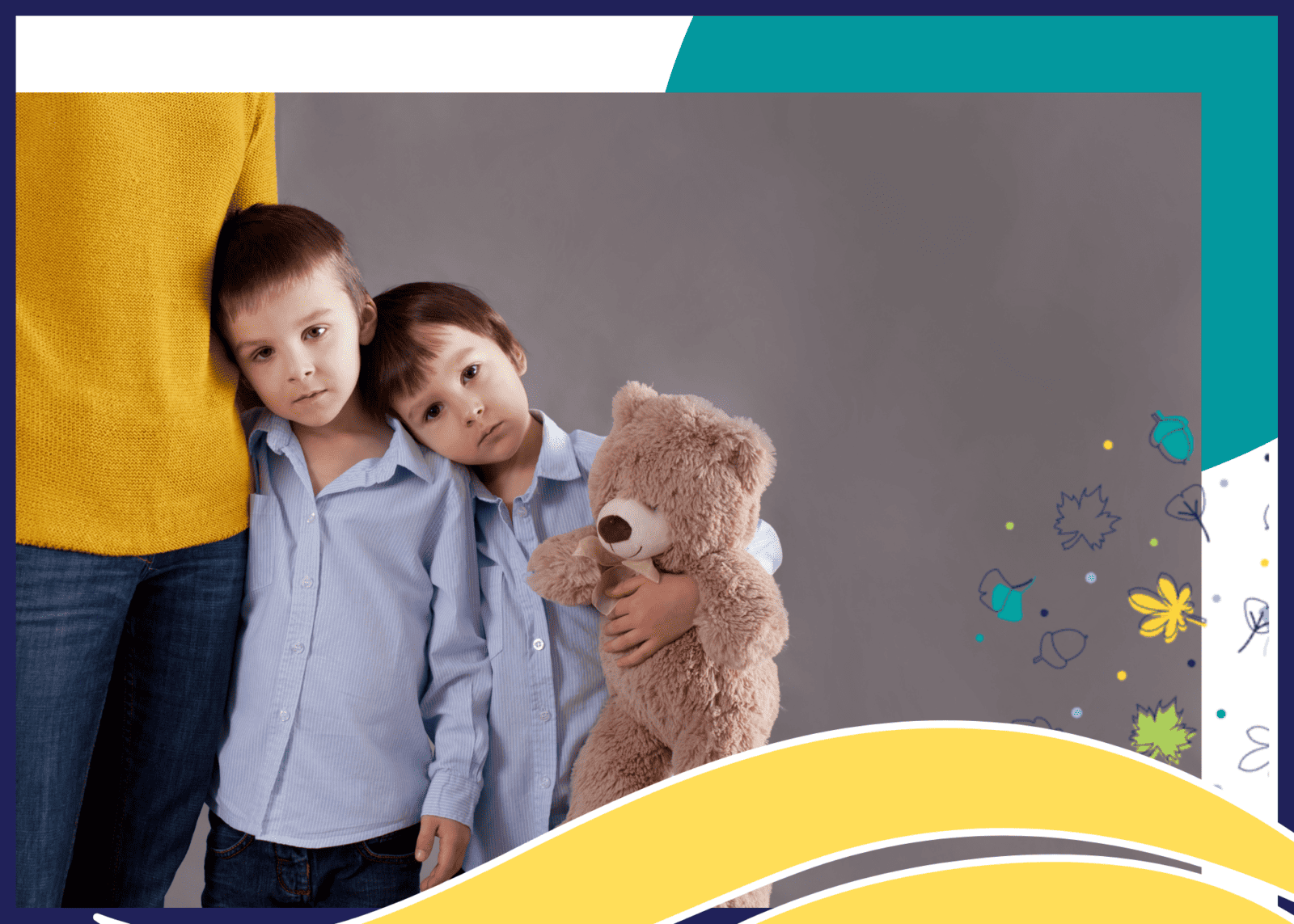Caregiving Through Grief
The loss of a loved one can be one of life’s most painful experiences. It is a time where we are navigating our own emotions, thoughts and transitioning into a new way of being and it can feel extra complex and challenging when we are simultaneously supporting our children through their own grief. Children’s grief can look different. Our hope is that this information will help you navigate or feel more prepared for that journey. After all, the loss of a loved one is a fundamental and inevitable human experience.
First, though loss is a shared human experience, it is impossible to feel truly ready or prepared for the impact and experience it leaves us with. Each person is on their own unique journey, often needing different things and different times as they move through their grief. This is especially true for children; their age, personality, developmental stage and life experience are all key components. Due to this complexity, it is helpful to start with the basics.
What is, and what is not, grief?
Grief is the natural emotional response to losing someone or something we love. This can be death, but also a loss of life as we know it, perhaps a parental separation, the death of a pet, or a major life change that keeps us from engaging or living in a way we once did. Grief can be thought of as a natural response that includes our thoughts, feelings, actions and behaviors, all of which help us move through processing the loss.
Mourning on the other hand is the process of adapting to the loss, something that is influenced and guided by our unique social and cultural practices and beliefs. This is important to differentiate so that we can better understand which stage of the process our children (and ourselves!) are in, so we can understand how to better support them. If there is one takeaway we can offer in terms of the difference between grief and mourning, it is that we cannot successfully transition into adapting to loss before we move through grief.
The Stages of Grief
We have learned to associate grief with the emotion of sadness, haven’t we? But in reality we can experience a wide range of emotions, all which are helpful to anticipate and recognize so that we get the sense they are normal and valid.
So what are they? Immediately following death, we can feel numb, shock and denial, where others can feel anguish, anger, guilt, regret, anxiety, intrusive images, overwhelm, loneliness or depression (Young, 2022). Others can feel guilty, helpless or anxious. Having a sense of the death being reality can take days, weeks or even months depending on the suddenness, cause or closeness to the person passed.
But wait, what about the 5 stages of grief? You may be familiar with the cycle or stages of grief put forward by Dr. Elisabeth Kübler-Ross in 1969; denial, anger, bargaining, depression, acceptance. We tend to agree with CAMH, when saying a cycle like this can offer a sense of direction and expectation, but it can also offer opportunities for comparison and wondering if we are doing grief “right”, which can keep us from seeing our own experience as valid. We prefer to remove the timeline and normalize every person’s experience for exactly what it is, their own.
How does this change with kids?
Much like adults, children express their grief in varying ways. Let’s start with age and developmental level, both of which highly affect a child’s ability to understand death, process grief and communicate their needs. Here is a helpful chart by Good Grief that outlines a child’s understanding of death and typical demonstrations of grief throughout the ages of 0-18. What is important to note is that at each developmental stage, a child’s understanding of death, emotional awareness and ability to communicate their questions and needs changes significantly. From there, a child can reprocess and reexperience grief differently as they move through a development stage and access new awareness or understanding. By being aware of the broad typical behaviors associated with grief as well as their underlying fear and need, we can walk beside our child in a way that guides and offers a sense of connection and safety. So how do we do this?
The Key is Communication
As a parent or caregiver it is natural to want to shield our children from hard and painful things. Afterall, their pain is our pain. However, across all ages, it is important for a child to understand and make sense of what happened. This means sharing clear information that is based on facts in an age appropriate way, even when it is uncomfortable and maybe painful. For example, it is common to use euphemisms around death such as “Uncle passed on, or he went to sleep but won’t wake up again”. While this language offers a shield of protection for the child and ease for the one communicating it, it can leave children to fill in the blanks with their own assumptions or interpretations. A child may then wonder if mom will go to sleep and never wake up, or perhaps they themselves might go to sleep and never wake up again, adding increasing distress.
A child’s assumptions around death when not provided clear, factual answers can also lead to guilt and responsibility for death, or the understanding that the person’s absence is temporary. Let’s work with the same scenario around the death of an Uncle due to illness such as cancer. We recommend saying, “Uncle had a sickness called cancer. The cancer caused his lungs to struggle to work, and the sickness got too big for his body to handle and so it caused his body to stop working. Uncle died and this means his body won’t work again. We know this is really hard to hear and maybe confusing. You might feel sadness as well or other feelings, and I am here for you and we can have as many conversations about this that you need”. You can also work to add in particular spiritual components that are meaningful to you, this can add a sense of connection and wonder to the process of death.
Be a Container of Safety and Resource
As a caregiver, you can think of yourself as a wide container that offers your child the permission and space to grieve. The container walls offer sturdiness and support to lean on and the space between offers freedom and time to move through each feeling in a way that is right for them. Within this container, children tend to grieve in bursts, or puddle jump their way through their experience. Big displays of sadness, followed by play or creativity, for example. Or they may regress in areas that don’t appear to be linked to grief such as asking for a parent to do something for them they have done independently for a long time, bed wetting or decline in academic performance.
The Five C’s
Within this wide way of showing grief, especially when a caregiver dies, children are often searching for the answer to these five questions:
Did I cause it?
Will I catch it?
Who will take care of me?
Why couldn’t I control it?
Can I (or why couldn’t I), cure it?
By offering the answers to these questions in a fact-based way, we can offer our children a sense of clarity, safety and free them from a sense of responsibility. It can also be helpful to bring them into decision making around the death. What age appropriate decisions would they like to be a part of for the funeral arrangements? What information are they comfortable communicating outside of the family and to school? How can they be a part of the timeline to return back to school?
Next Steps
We hope this blog has been helpful whether you are working through grief of your own, supporting your child through their own experience or perhaps as a learning to take with you into the future. If you need additional support working through grief personally or within your family, the team at Acorn Counselling is here.
In the meantime, here are 13 recommended books from the Children’s Grief Foundation, that cover topics such as loss of a parent, grief on the playground, losing a grandparent and creating lasting connections with our loved ones.





